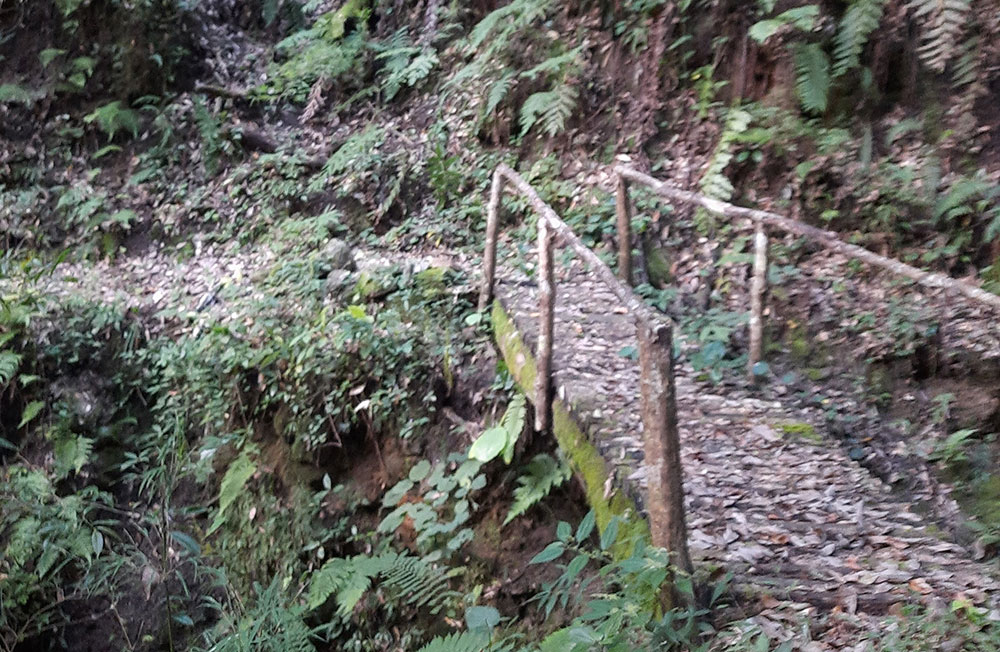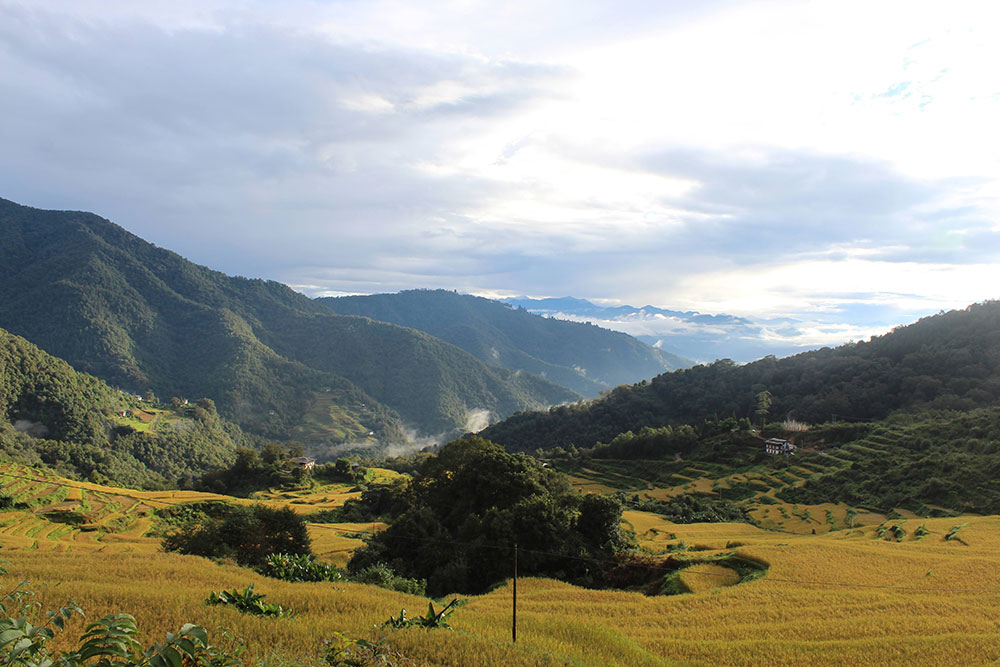Chhimi Dema
The days were long and warm. Fresh buds were in bloom. Before the heavy rain and hot days began, people would move to Thimphu. It is a three-day journey from Punakha to Thimphu.
The seasonal migration is no longer practiced today because modernisation has brought home improvements and more advanced farming technologies. Only the monastic body and a few nomadic families practice it.
What route did our ancestors take? What did they see and hear on their journeys? What remains today of that distant past? To experience a life forgotten amidst modernisation, twenty-five students and nine teachers from Motithang Higher Secondary School trekked the Punakha to Thimphu migratory trail on October 16.
It was worth the pain, as I enjoyed the warm breeze brushing against my skin and the view of vast paddy fields in front of me. The first night, we rested at Sonam Wangmo’s Homestay in the Gakid Village in Toedpisa, Punakha.
The house is 82 years old and belonged to Sonam Wangmo’s maternal uncle.
The trek began from Seo Drangsa, a name connoting the place Zhabdrung had his seo (lunch) on his journey to Thimphu. Two hours later, we halted briefly at Chandana.
Keeping pace with the students and stopping to explore plants and trees around, what seemed arduous was not really so difficult.


The pilot project was to connect the young to the ageing practise of seasonal migration
“Wild turmeric leaves are used in cowsheds. What we see in abundance now will be cut and taken to sheds as bedding for cows,” said Tandin Sonam Wangchuk, the former director of Etho Metho Tours. He is also one of the men behind the idea of reviving the ancient migratory trail.
The chirpine forest with its orchids, lemongrass, and wild turmeric, among others, seemed to stretch so far on a clear day.
“This place was previously known as Lungdra Wom. After Drukpa Kunley’s arrow from Yamdrok in Tibet hit the house, the place came to be Chandana,” said Khandu, the descendent of Pelzang Bhutri, the Khandro who gave birth to Drukpa Kunley’s son.
Drukpa Kunley reached Chandana in search of the arrow in the 16th century. As prophesied by a Khandro in Tibet, he had a son called Ngawang Tenzin from Pelzang Bhutri.
In Chandana Lhakhang, Khandu explained the murals on the walls: “Drukpa Kunley hit the dead old woman with a stick, and she arose and walked to the pyre.”
The students nodded their heads. Some turned on the recorder app on their phones, a teacher had reminded them earlier that they would have to write a report about the trek.
The purpose of reviving the ancient migratory trail, Tandin Sangay Wangchuk said, is to keep the young connected to a migratory practice like this and let them explore the culture and ecology along the way.
There was not a cloud in the sky as we walked from Chandana. We had to walk approximately 11km to reach My Gakid Village.
The climb from Chandana to Menchunna is tough, explained guide Sangay Dendup, but doable.
True to his words, the Drukpa Kunley’s trail was narrow and hidden under dried leaves, beggarticks, and nettle plants. There are footbridges along the way, some broken and rotting.
Tall oaks, chestnuts, and needlewoods protect us from the sun.
After an hour walk into the warm broadleaved forest, we saw the Toebi Rongchu.
It is about a metre deep, cold and fast-flowing.
I could hear my heart pounding in my chest. After every step on the steep slope, I longed for a rest.
After about a half-hour climb, the trail settled to a gentle slope and we reached the Gakid Village School.
There was smoke coming from the firepit in front of the homestay. After eight hours of walking, one would expect the tiredness to set in, but it was quickly forgotten. What I saw and smelled on the way was soothing.
On October 17, our journey ended at Dochula pass, after climbing for an hour and 13 minutes from Lamperi.
To traverse these stretches with livestock, ration and utensils, as our ancestors did decades ago, is no mean feat. In those two days, we discovered the rich cultural, and natural heritage along the trail. For a pinch of rural farm life experience, and to relish the healing powers of forests, streams and paddy fields, the trek remains an attractive option.


